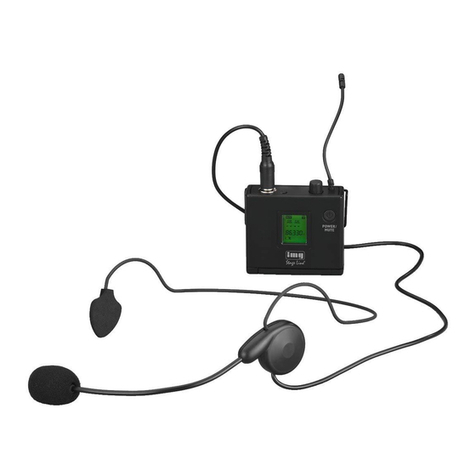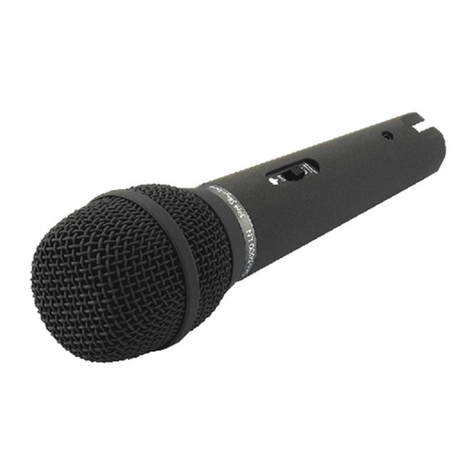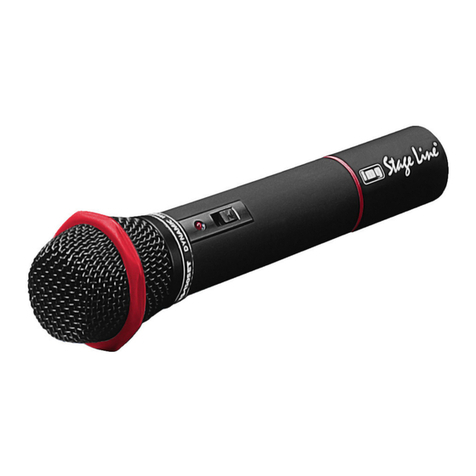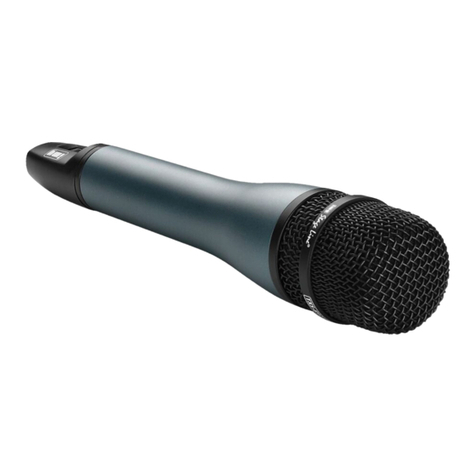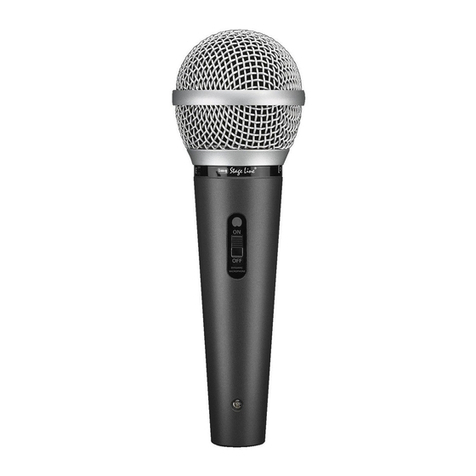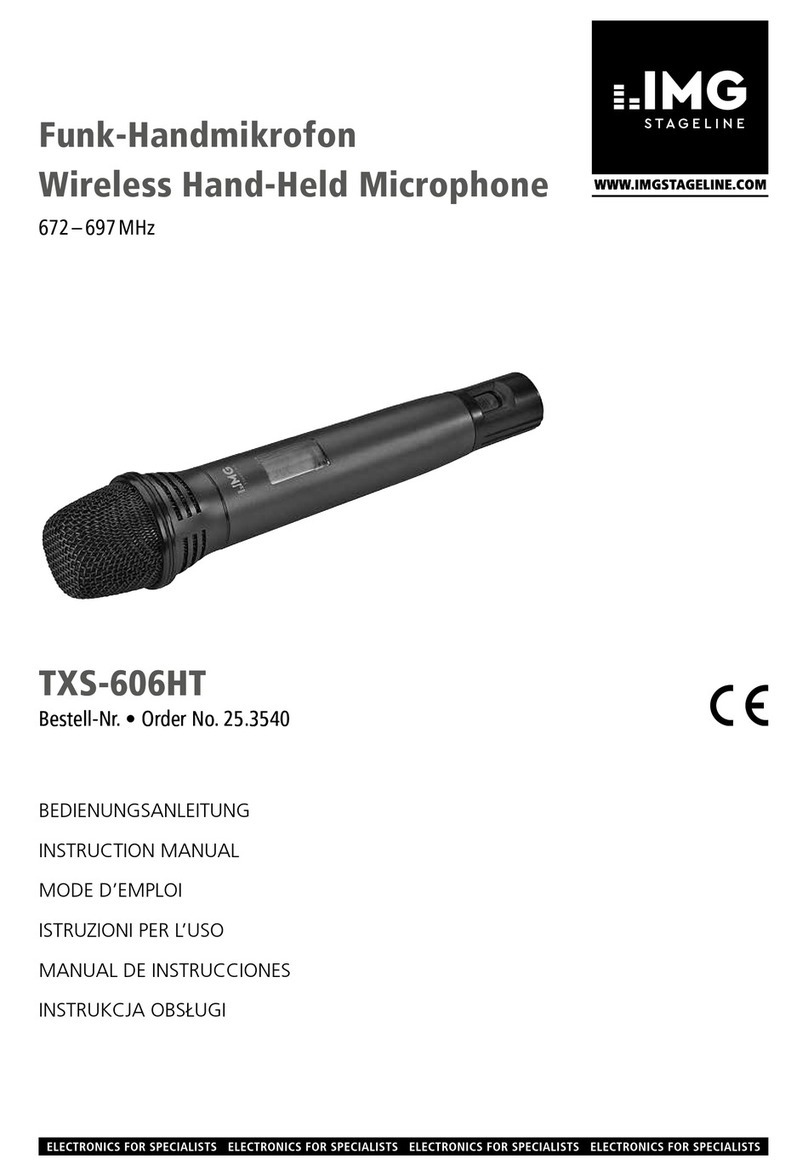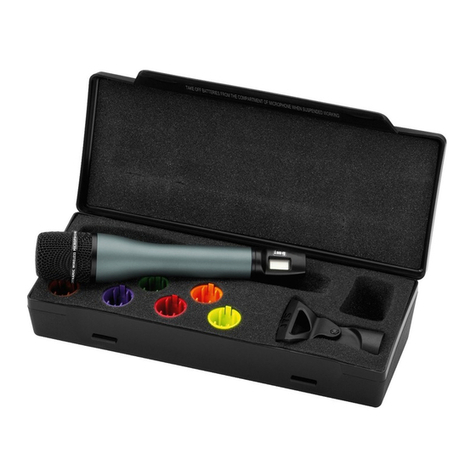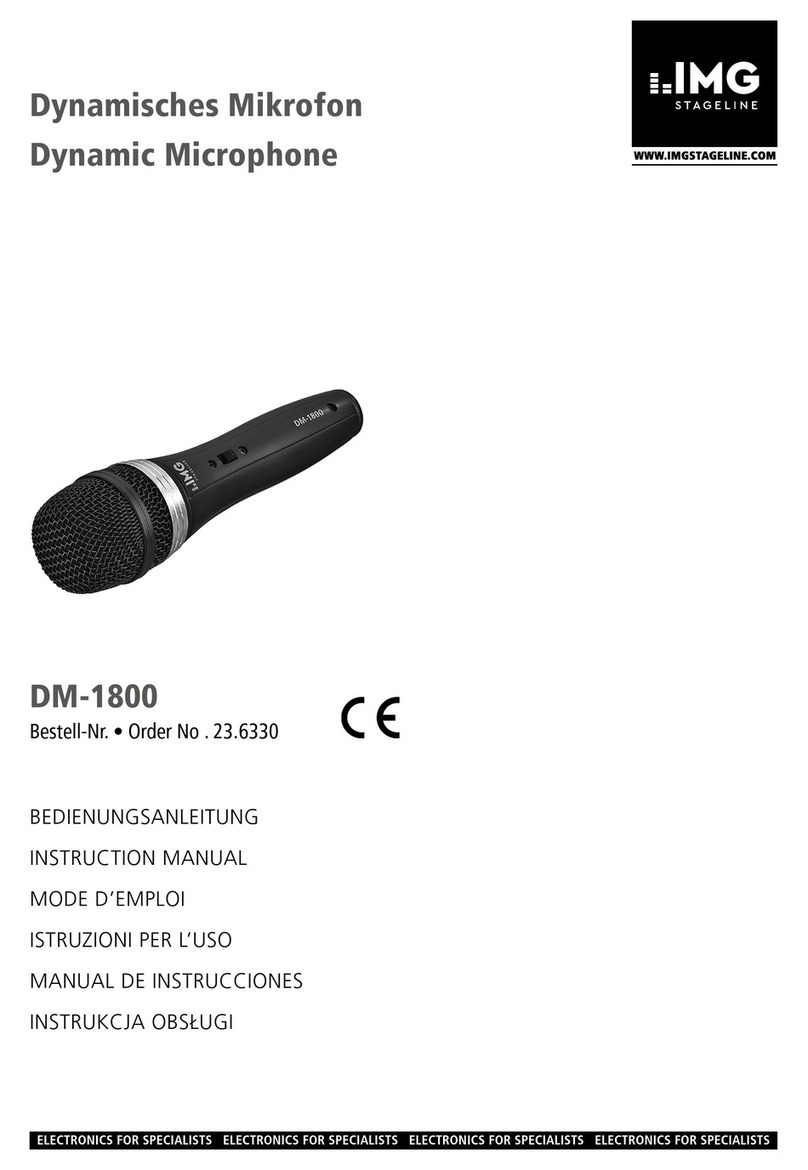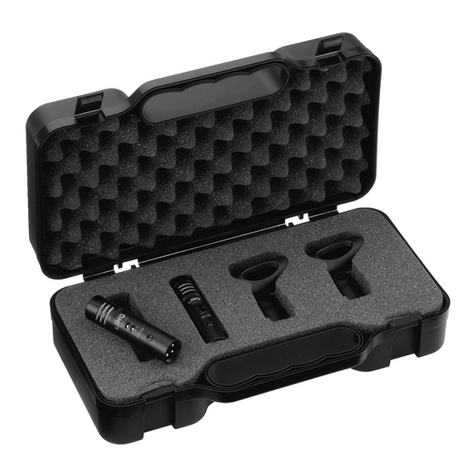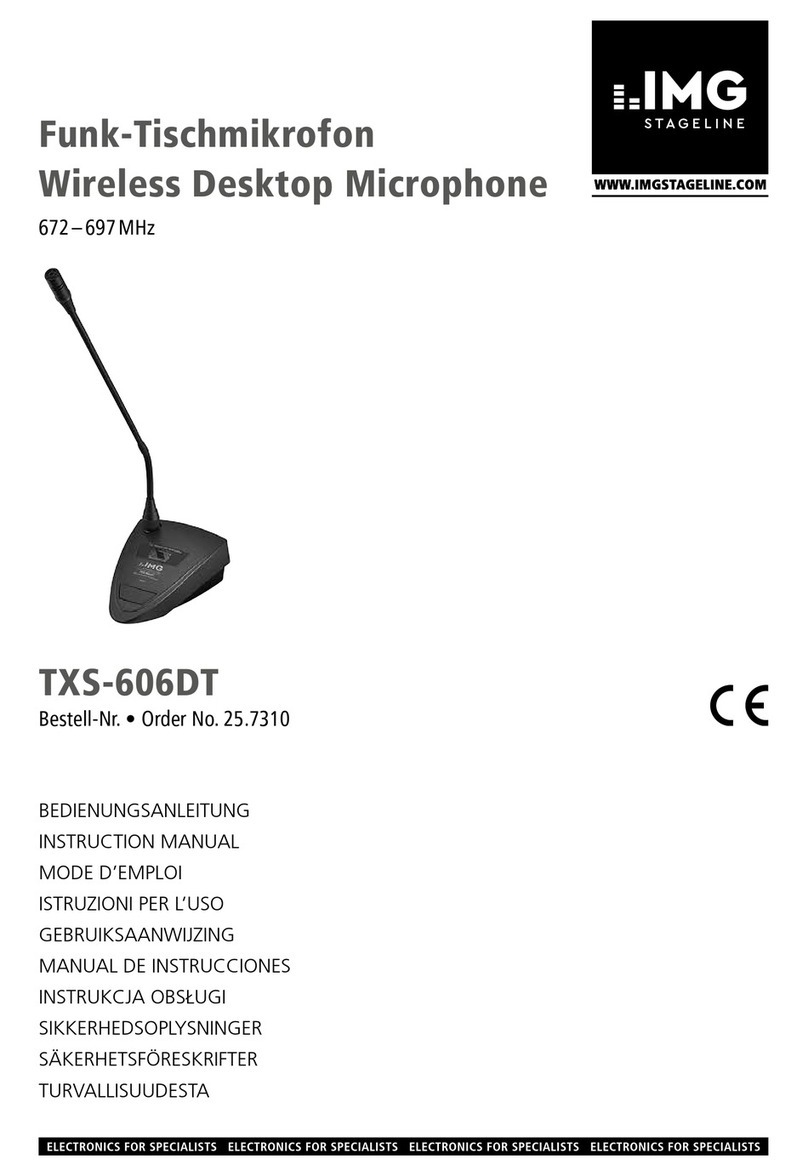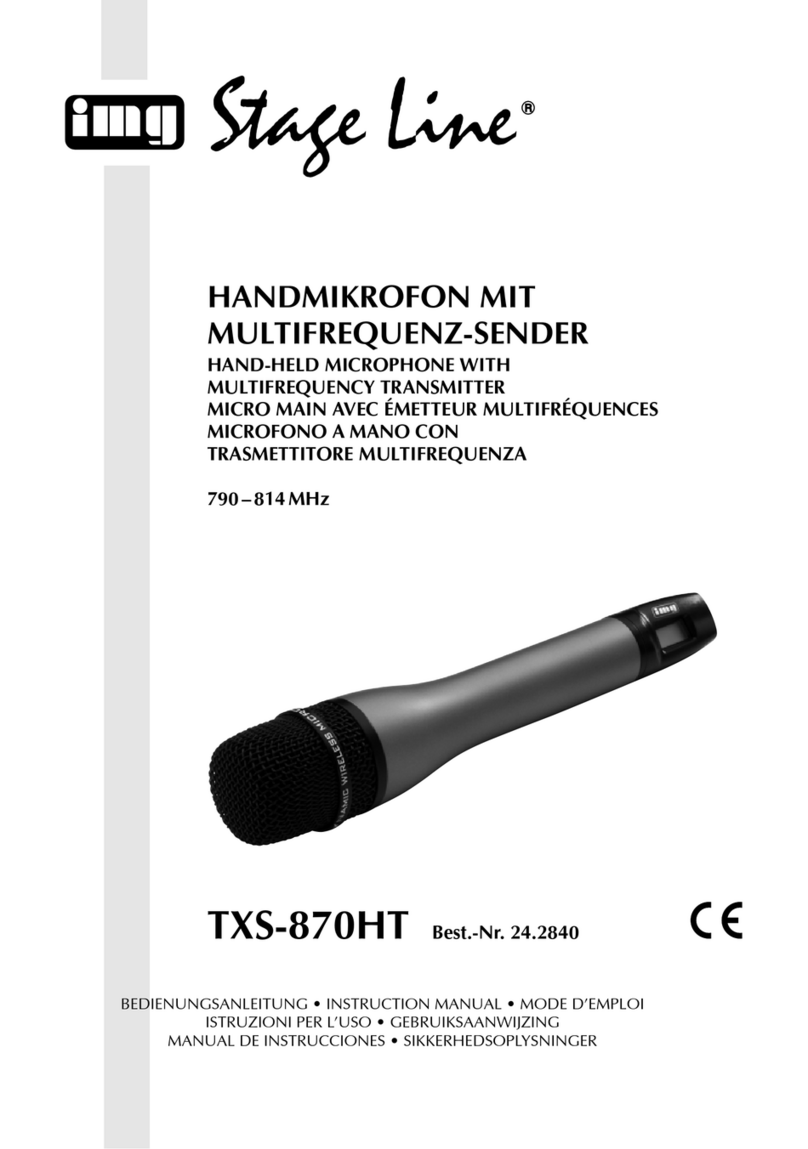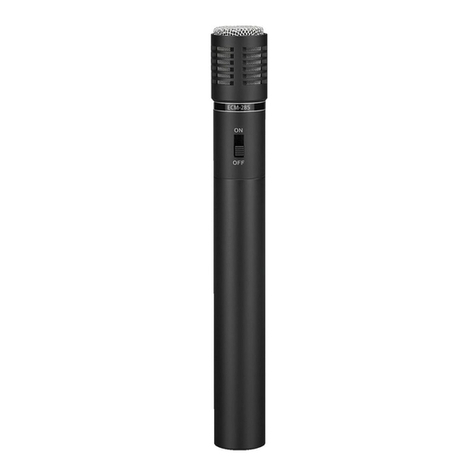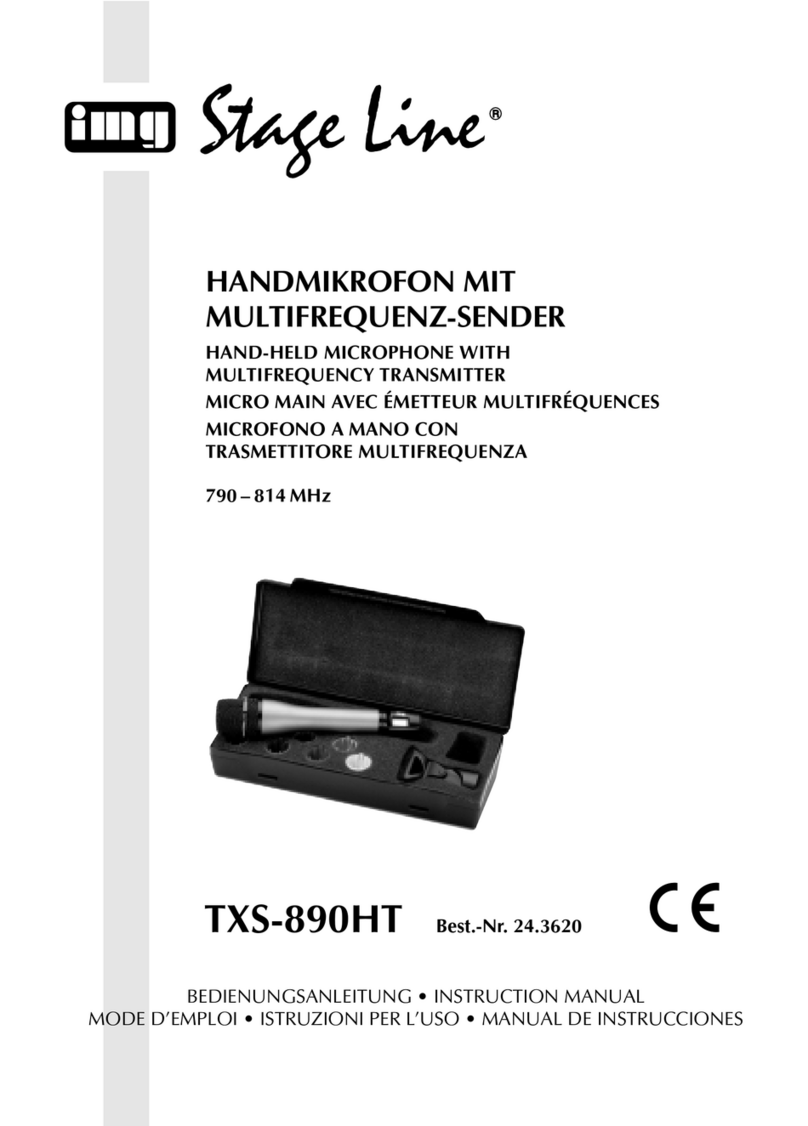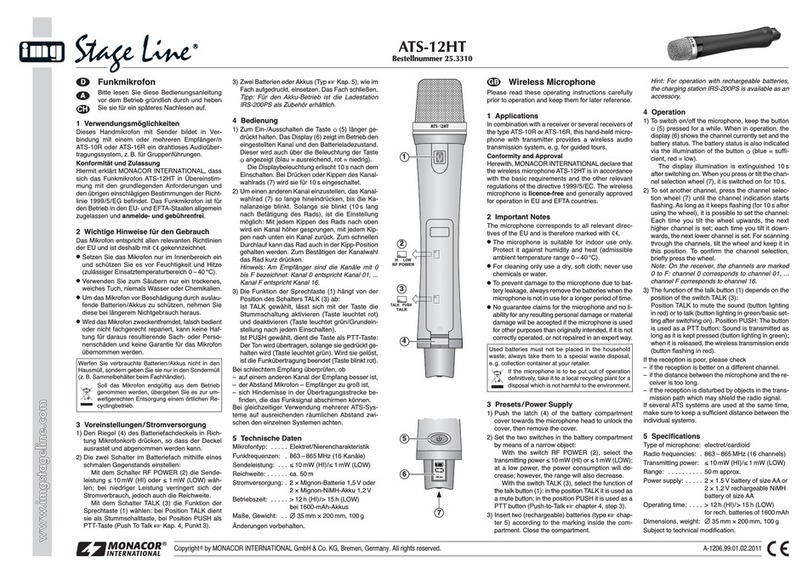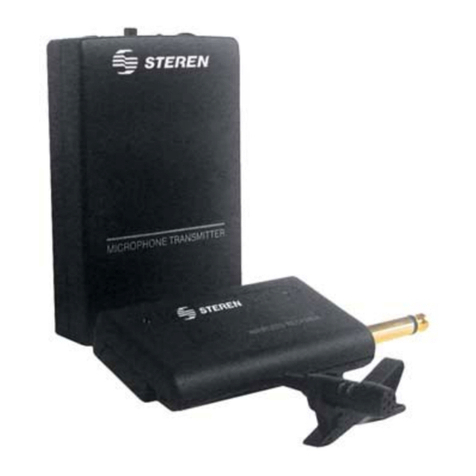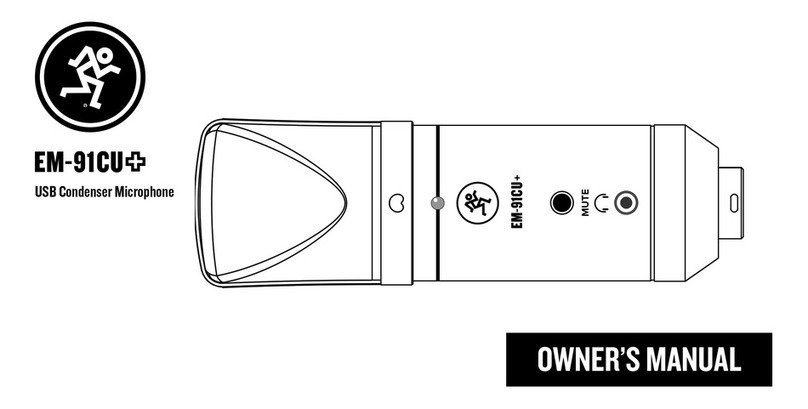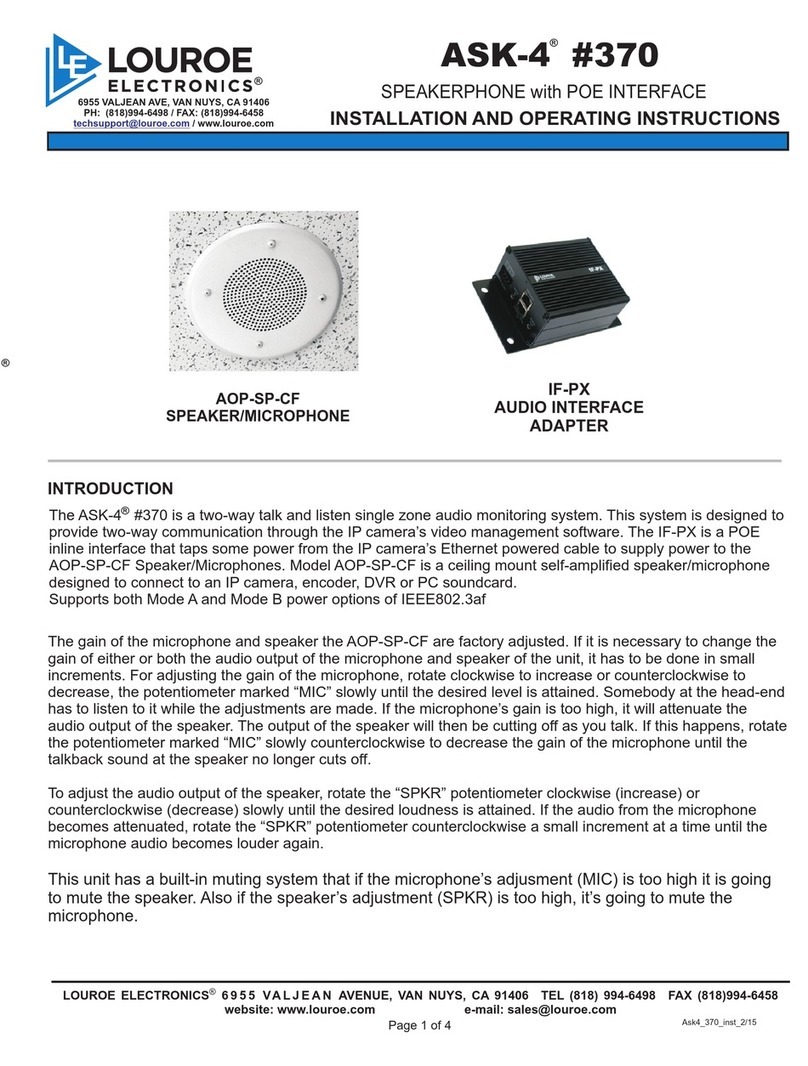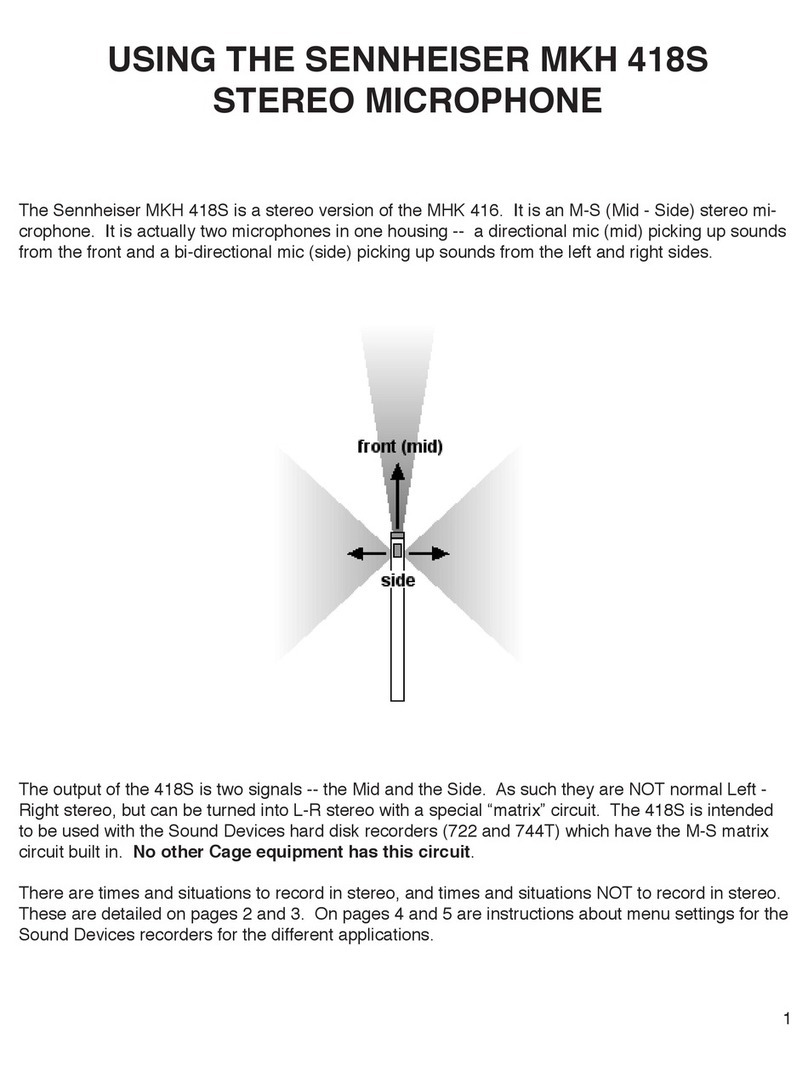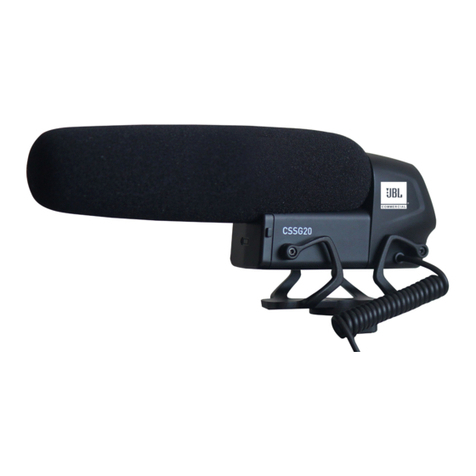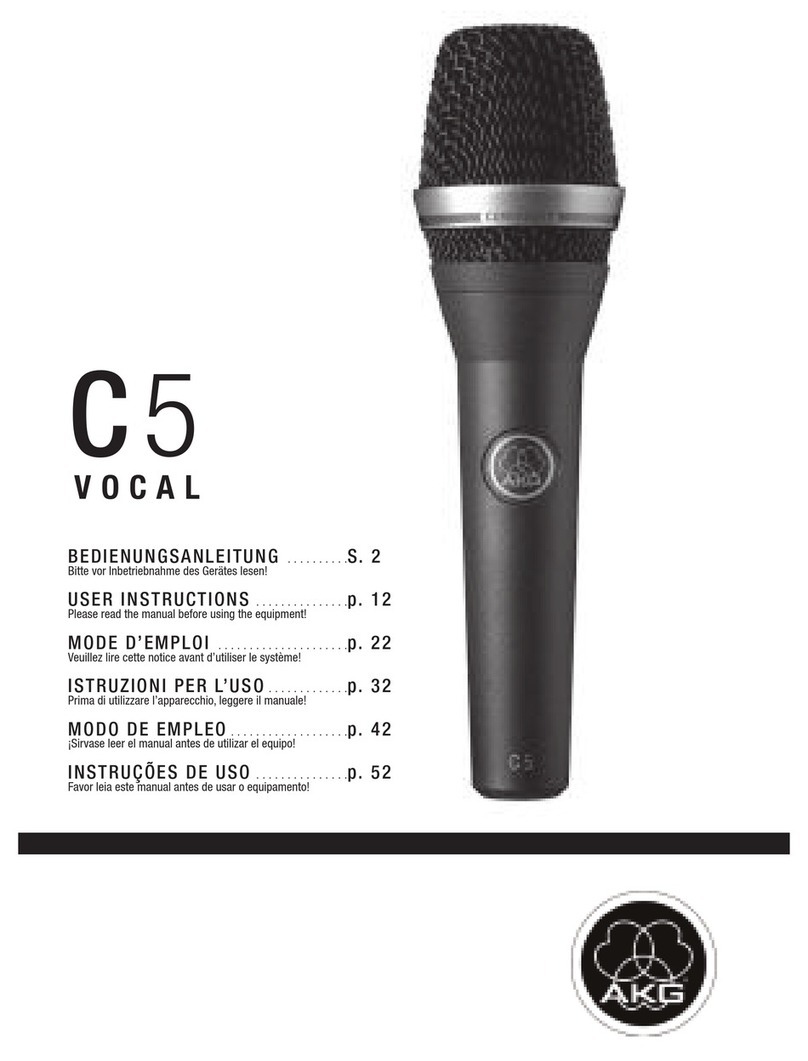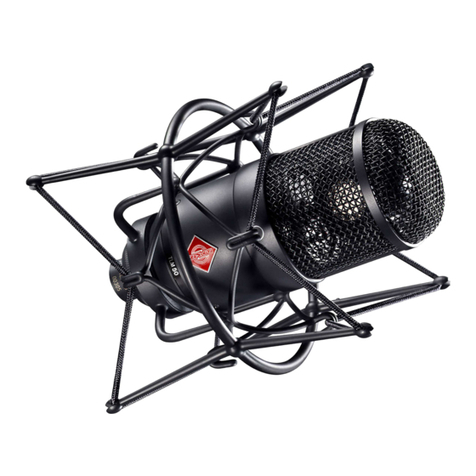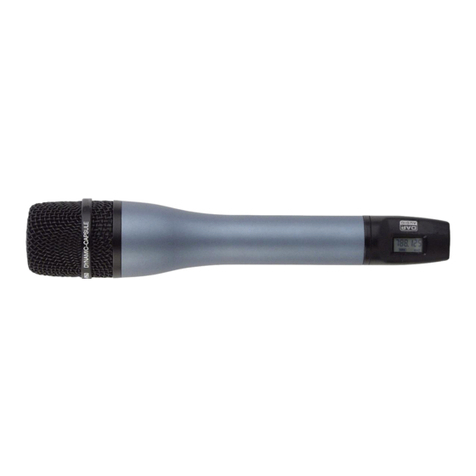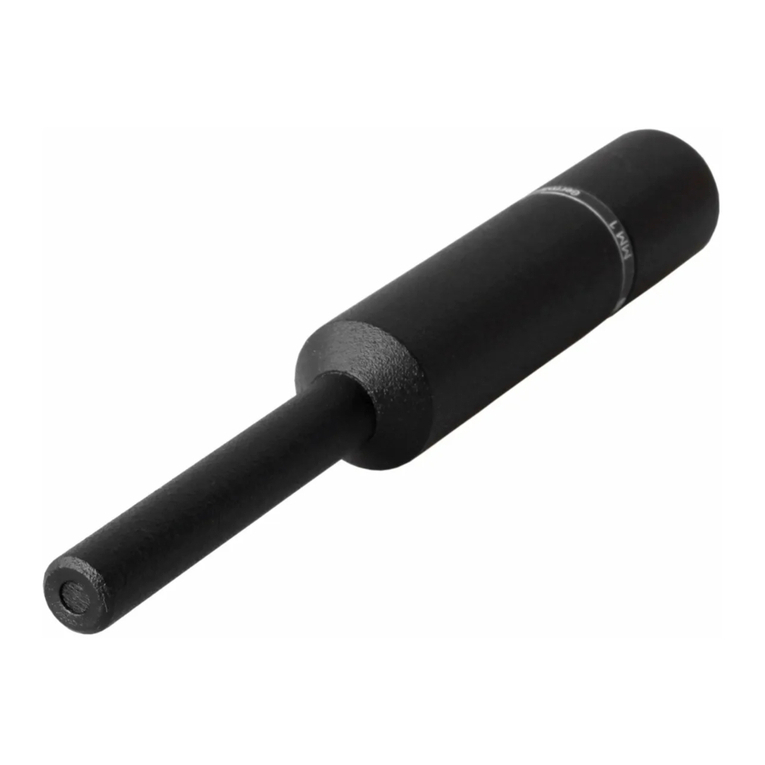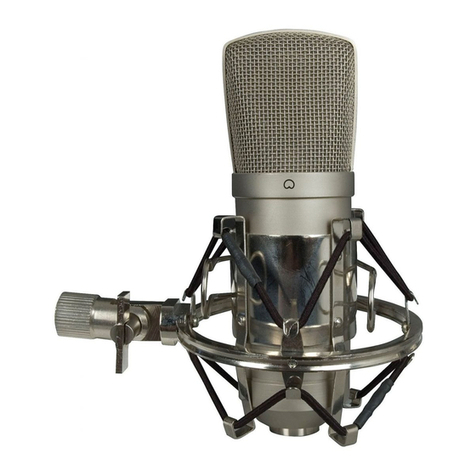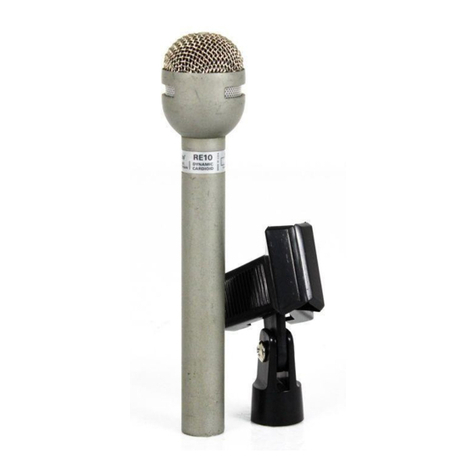ECM -140 USB
Best.-Nr. 23.5620
wwwwww..iimmggssttaaggeelliinnee..ccoomm
Réponse en fréquence
Risposta in frequenza
Diagramme polaire (à 1 kHz)
Diagramma direttivo (con 1 kHz)
®
MONACOR INTERNATIONAL GmbH & Co. KG
•
Zum Falsch 36
•
28307 Bremen
•
Germany
Copyright
©
by MONACOR INTERNATIONAL. All rights reserved. A-0877.99.02.06.2013
Microphone USB à condensateur
Veuillez lire la présente notice avec attention avant
le fonctionnement et conservez-la pour pouvoir vous
y reporter ultérieurement.
1 Possibilités dʼutilisation
Ce microphone à condensateur avec une mem-
brane 25,4 mm (1″) extrêmement fine et à revête-
ment or est conçu pour la prise de son dʼinstru-
ments et des applications de parole. Il se branche
directement sur un ordinateur via une interface
USB 1.1 ou USB 2.0.
Pour les enregistrements audio via lʼordinateur,
on peut utiliser le logiciel audio livré avec le système
dʼexploitation ou utiliser un logiciel audio installé en
plus. Différents programmes dʼenregistrements
audio par exemple “audacity” sont disponibles
comme logiciel gratuit sur Internet.
2 Conseils dʼutilisation importants
Le microphone répond à toutes les directives né-
cessaires de lʼUnion européenne et porte donc le
symbole .
GLe microphone nʼest conçu que pour une utilisa-
tion en intérieur. Protégez-le de lʼhumidité et de la
chaleur (plage de température de fonctionnement
autorisée : 0 – 40 °C).
GPour le nettoyer, utilisez uniquement un chiffon
sec et doux, en aucun cas de produits chimiques
ou dʼeau.
GNous déclinons toute responsabilité en cas de
dommages matériels ou corporels résultants si le
microphone est utilisé dans un but autre que celui
pour lequel il a été conçu, sʼil nʼest pas correcte-
ment branché ou sʼil nʼest pas réparé par une per-
sonne habilitée ; en outre, la garantie deviendrait
caduque.
3 Fonctionnement
1) Vissez le support du microphone (araignée) sur
un pied avec un filetage 15,9 mm (5⁄8″). Pressez
les deux étriers à fil sur le support et insérez le
microphone.
2) Pour orienter le microphone, desserrez la vis de
réglage sur le support. Positionnez le microphone
de telle sorte que le côté avec le symbole soit en
direction de la source sonore. Puis revissez la vis.
3) Allumez lʼordinateur.
4) Reliez le cordon livré au microphone et à un port
USB de lʼordinateur : La LED bleue au-dessous
du diaphragme brille et le microphone est re-
connu par le système dʼexploitation comme ap-
pareil USB dʼentrée audio. Les drivers nécessai-
res – drivers standards du système dʼexploita-
tion – sont automatiquement installés.
(Dans certains cas cependant, il peut être né-
cessaire de donner manuellement le chemin
Lorsque le microphone est définitivement
retiré du service, vous devez le déposer
dans une usine de recyclage adaptée pour
contribuer à son élimination non polluante.
dʼaccès des drivers sʼils ne sont pas automati-
quement trouvés par le système dʼexploitation. Si
besoin, installez les drivers nécessaires via le CD
dʼorigine du système dʼexploitation sʼils ne sont
pas disponibles sur lʼordinateur.)
5) Appelez le logiciel audio utilisé, effectuez les ré-
glages pour la prise de son par le micro (voir no-
tice du logiciel audio).
4 Caractéristiques techniques
Système : . . . . . . . . . . . . . . récepteur à gradient de pression,
cardioïde
Pression sonore maximale : 130 dB pour taux de distorsion
0,5 %
Rapport signal / bruit : . . . . . 84 dB (filtre A)
Convertisseur A/D : . . . . . . 16 bit pour taux 8 – 48 kHz
Alimentation : . . . . . . . . . . . 5 V par interface USB
Connexion sur le micro : . . . prise USB femelle type B
Cordon micro : . . . . . . . . . . cordon USB 3 m (fiche mâle
type A / fiche mâle type B)
Standard de branchement : USB 1.1, USB 2.0
Dimensions, poids : . . . . . . ∅50 mm × 185 mm, 400 g
Systèmes d’exploitation appropriés :
Windows 98 SE, Windows ME, Windows 2000, Windows XP,
Windows Vista, Mac OS 9, Mac OS X
Tout droit de modification réservé.
Windows est une marque déposée de Microsoft Corporation aux Etats-
Unis et dans les autres pays. Mac OS est une marque déposée de Apple
Computer, Inc. aux Etats-Unis et dans les autres pays.
Microfono USB a condensatore
Vi preghiamo di leggere attentamente le presenti
istruzioni prima della messa in funzione e di con-
servarle per un uso futuro.
1 Possibilità dʼimpiego
Questo microfono a condensatore con la sua mem-
brana di 25,4 mm (1″), estremamente sottile, pla-
cata dʼoro, è adatto sia per prelevare il suono da
strumenti musicali che per applicazioni di canto. Si
collega direttamente ad un computer con porta
USB 1.1 o USB 2.0.
Per la registrazione tramite il computer si può
usare il software audio in dotazione con il sistema
operativo, oppure un software audio installato in ag-
giunta. Vari programmi di registrazione audio, p. es.
“Audacity”, sono disponibili in Internet come soft-
ware libero.
2 Avvertenze importanti
Il microfono è conforme a tutte le direttive rilevanti
dellʼUE e pertanto porta la sigla .
GUsare il microfono solo allʼinterno di locali. Pro-
teggerlo dallʼ umidità e dal calore (temperatura
dʼimpiego ammessa fra 0 e 40 °C).
GPer la pulizia usare solo un panno morbido,
asciutto; non impiegare in nessun caso prodotti
chimici o acqua.
GNel caso dʼuso improprio, di collegamenti sbagliati
o di riparazione scorretta del microfono, non si as-
sume nessuna responsabilità per eventuali danni
consequenziali a persone o a cose e non si as-
sume nessuna garanzia per il microfono.
3 Messa in funzione
1) Avvitare il supporto microfono (spider) su uno sta-
tivo con filettatura di 15,9 mm (5⁄8″). Esercitare
una pressione sulle due staffe di filo di ferro dello
spider ed inserire il microfono.
2) Per orientare il microfono, allentare la vite di bloc-
caggio del supporto, posizionare il microfono in
modo che il lato con il simbolo sia indirizzato
verso la sorgente sonora e stringere di nuovo la
vite.
3) Accendere il computer.
4) Collegare il cavo in dotazione con il microfono e
con una porta USB del computer: il LED blu sotto
la membrana si accende, e il microfono è rico-
nosciuto dal sistema operativo come dispositivo
di input audio USB. I driver necessari – driver
standard del sistema operativo – saranno instal-
lati automaticamente.
(In alcuni casi può essere necessario indicare
manualmente il percorso dei driver se non ven-
gono trovati automaticamente dal sistema ope-
rativo. Eventualmente installare i driver richiesti
Se si desidera eliminare il microfono defi-
nitivamente, consegnarlo per lo smalti-
mento ad unʼistituzione locale per il rici-
claggio.
per mezzo del CD originale del sistema operativo
se non si trovano sul computer.)
5) Chiamare il software audio utilizzato e effettuare
le impostazioni per la registrazione con il micro-
fono (Istruzioni del software audio).
4 Dati tecnici
Sistema: . . . . . . . . . . . . . . . microfono a gradiente di pres-
sione, a cardioide
Max. pressione sonora: . . . 130 dB con fattore di distorsione
0,5 %
Rapporto S/R: . . . . . . . . . . . 84 dB (filtro A)
Convertitore A/D: . . . . . . . . 16 Bit con frequenza di campio-
namento 8 – 48 kHz
Alimentazione: . . . . . . . . . . 5 V tramite porta USB
Contatto sul microfono: . . . . presa USB tipo B
Cavo microfono: . . . . . . . . . cavo USB di 3 m (connettore tipo
A su connettore tipo B)
Standard di connessione: . . USB 1.1, USB 2.0
Dimensioni, peso: . . . . . . . . ∅50 mm × 185 mm, 400 g
Sistemi operativi adatti: . . . .
Windows 98 SE, Windows ME,
Windows 2000, Windows XP, Windows Vista, Mac OS9, Mac OS X
Con riserva di modifiche tecniche.
Windows è un marchio registrato della Microsoft Corporation negli USA
ed in altri paesi. Mac OS è un marchio registrato della Apple Computer,
Inc. negli USA ed in altri paesi.
F
I



